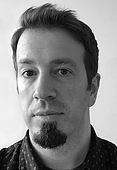Evolutionary perspectives on vertebrate hard tissues

Mason DEAN
Max Planck Institute of Colloids and Interfaces, Potsdam, Germany Mason.Dean@mpikg.mpg.de
(Seminar in English)
Skeletal biology literature is dominated by work on a small number of model mammalian species, although mammals represent fewer than 10% of living species of vertebrates (animals with backbones). In contrast, the number of living fish species dwarfs that of mammals, being half of all vertebrates and offering an astounding range of morphological, functional and ecological diversity. Fishes represent the oldest non-extinct lineages of vertebrates, and so provide an unparalleled window into the evolution of skeletal tissues, with the two primary groups —the so-called cartilaginous fishes and bony fishes— illustrating two strikingly different primary skeletal materials. I use a variety of anatomical, imaging, mechanics and materials science techniques to investigate development and form-function relationships in fish skeletal materials, from the tissue level up to the level of whole skeletal elements. By rooting these analyses in the ecology of the species under study and in comparisons with other vertebrate tissues, I show that vertebrate skeletal morphology and performance are much broader than can be appreciated from mammalian tissues alone.
Recent publications:
Seidel R, (…), MN Dean (2017) Ultrastructural, material and crystallographic description of endophytic masses - a possible damage response in shark and ray tessellated calcified cartilage. Journal of Structural Biology. 198: 5-18. (DOI: 10.1016/j.jsb.2017.03.004).
Jayasankar AK, (…), MN Dean (2017) Mechanical behavior of idealized, stingray-skeleton-inspired tiled composites as a function of geometry and material properties. Journal of the Mechanical Behavior of Biomedical Materials. 73: 86-101 (DOI:10.1016/j.jmbbm.2017.02.028).
Frølich S, JC Weaver, MN Dean, H Birkedal (2017) Uncovering nature's design strategies through parametric modeling, 3D printing, and mechanical testing. Advanced Engineering Materials. 19: 1600848. (DOI: 10.1002/adem.201600848)
Contact du Comité SEEM: seem@services.cnrs.fr. Contact du Labex CEMEB: cemeb-gestion@umontpellier.fr


